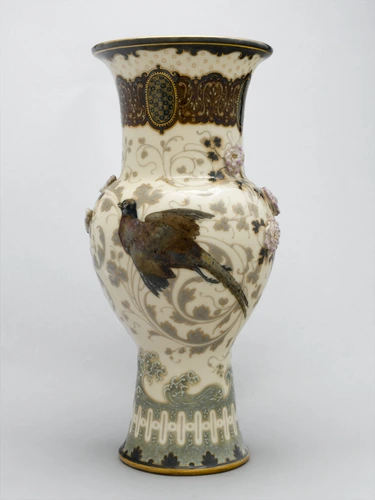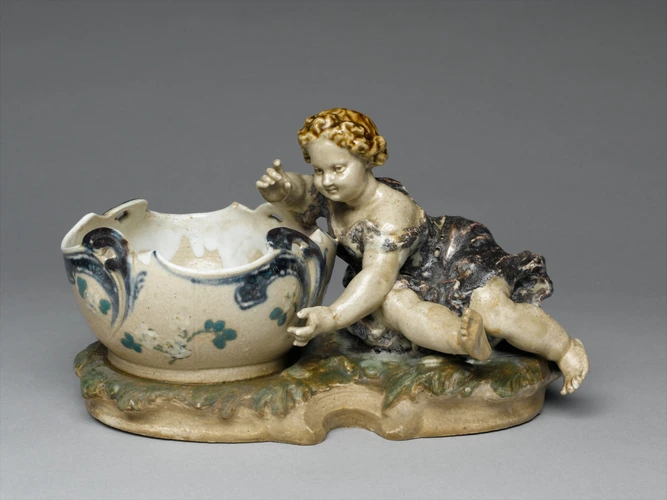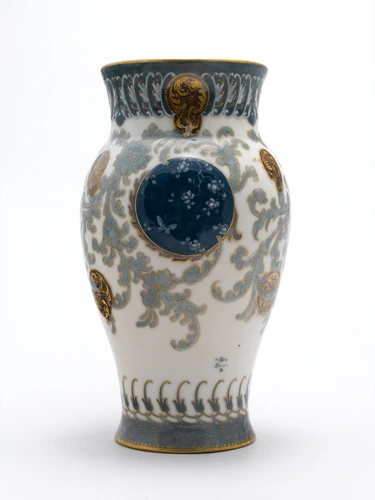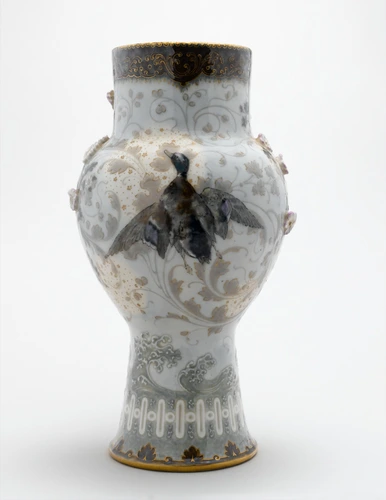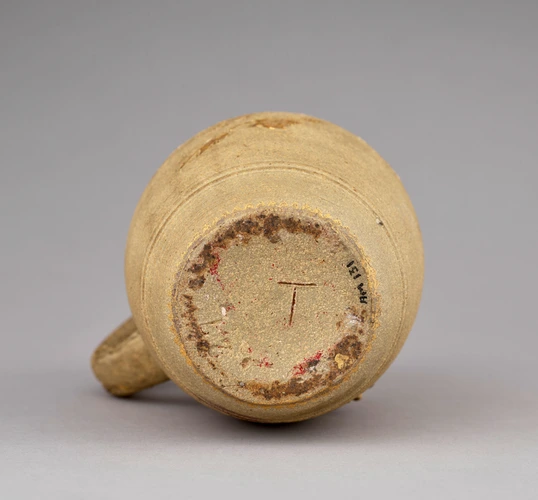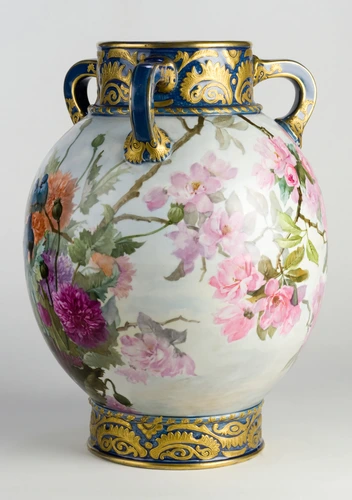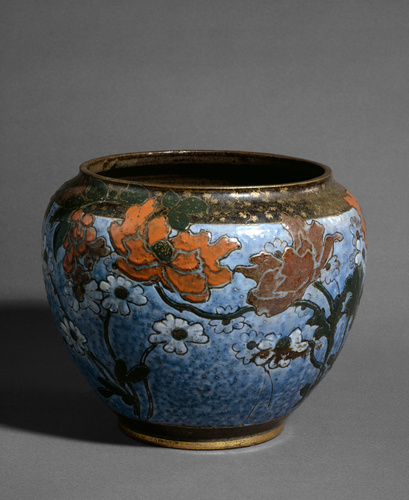Coupe
The son of porcelain painter at the Sèvres factory, Albert Dammouse trained at the Ecole Nationale des Arts Décoratifs and the Ecole Nationale des Beaux-Arts. He already had a great career as a ceramist behind him when he began to work with glass in 1897. At the Salon de la Société Nationale des Beaux-Arts in 1898, he exhibited cups, bowls, and goblets in fine, opaque glass paste, decorated with plant or animal motifs, sometimes moulded from life.
His enamel powders were pressed into refractory moulds and fired. This material was often called "enamel paste". The mixture of glass and metal oxides is the same as for glass paste, but the fact that it can be treated to produce a wide range of effects justifies a special name. The finesse of these glass objects is not unlike the transparency of the finest porcelain. However, unlike porcelain, the colours are not laid on the paste but constitute the very substance of the vases.
This technique enables the glassmaker to simulate the texture of flower petals, as can be seen in this piece, made in 1910. The astonishing luminosity of the material combined with delicacy and refinement of the colours made these objects highly popular. Encouraged by his success in this field, Dammouse seems to have gradually stopped working with ceramics.

